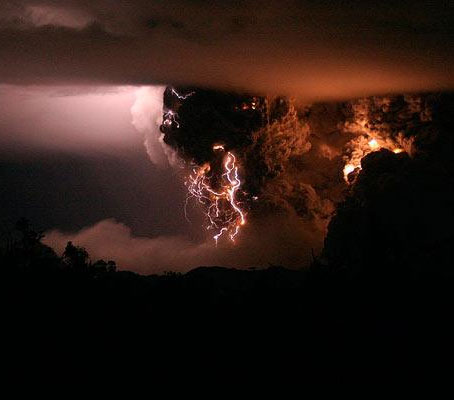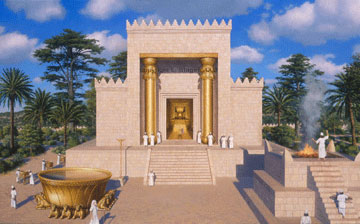A Blazing Torch and a Smoking Firepot

Moses spent 40 years in the wilderness, then Israel did. God’s prophet lives through the pattern, then God’s people follow him in a larger pattern. The head of the sacrifice, then the body. The Adam, then the Greater Eve. Jesus, then the church.
James Jordan observes that the Promised Land failed to support Abram both during the famine and also later concerning the flocks of Abram and Lot. Only after the Lord “purified” the Land with a sacrifice was it again a garden for the people of God. Like Adam, a deep sleep fell upon Abram, but it was animal substitutes that were divided.
The Lord passed over Abram, but in the darkness, a smoking firepot and blazing torch passed through the divided animals. God structured this event to follow Israel’s feasts, with Passover and Atonement at each end, and the Lord’s prediction of the Hebrews’ slavery in Egypt at the “wilderness” centre.
The blazing torch and smoking firepot are the Lord’s chariot throne. The blazing torch (the head) is His throne, the Ark. The smoking firepot is the Incense Altar, the cloud of angel elders in His train (the body), the Holy Place positioned ‘underneath’ the Most Holy (see Ezekiel 1).1
Revelation 8
The third angel blew his trumpet, and a great star fell from heaven, blazing like a torch,
After the ascension of Christ, Satan was expelled from his “ministry” before God as the Accuser of man. Like the evil twin of the blazing torch that measured Abram’s sacrifices, he was then used by God to bring an end to the Old Covenant upon the Land.
And the fifth angel blew his trumpet, and I saw a star fallen from heaven to earth, and he was given the key to the shaft of the [Abyss]. He opened the shaft of the [Abyss], and from the shaft rose smoke like the smoke of a great furnace, and the sun and the air were darkened with the smoke from the shaft.
The seven trumpets are a chiasm, with the third and fifth corresponding symmetrically. The “de-Ascension” of Satan mirrors his fall in the third trumpet. Like Christ, he was given a key. His throne-coming was also accompanied by clouds of smoke, but as false High Priest, instead of a sweet-smelling aroma it was the sulphur of Sodom. As Pentecost’s fire came from the Altar of Incense in heaven, its evil twin bore an army of unholy mighty men—the “smoking firepot” body of Satan’s blazing torch head. It was the children of Satan (John 8:44), an army of Judaisers, locusts who would devour the Land. As in Daniel 7, the winds of the Spirit raised up beasts.
“as with Tyre of old, the Abyss is being dredged up to cover the Land with its unclean spirits. Apostate Israel is to be cast out of God’s presence, excommunicated from the Temple, and filled with demons. One of the central messages of Revelation is that the Church tabernacles in heaven; the corollary of this is that the false church tabernacles in hell.”2
And the armies of heaven, arrayed in fine linen, white and pure, were following him on white horses. Revelation 19:14
As the preaching of the seven-sealed Gospel to the Land began with a white horse, so at the destruction of Judaism, the preaching of the Gospel to the World began with the white horse passing through the divided pieces of the Land (Zechariah 14:4). However, this time, Christ did not ride alone but with His bride. He was a blazing torch, and She was now the smoking firepot—a permanent part of His Ark-chariot. A government of ascended men had replaced the government of angels. Together they passed through the midst of a divided Land to carry the seven seals to the World.
“Then passing through the midst of them, He went His way.” Luke 4:30
________
1 Note also that in Exodus 25-31, the Ark is the Light of Day 1, and the Incense Altar is the “swarms” of Day 5 – birds from above and fish from below. The Tabernacle was both a portable Sinai and an image of the chariot of God.
2 David Chilton, The Days of Vengeance, p. 244.





























